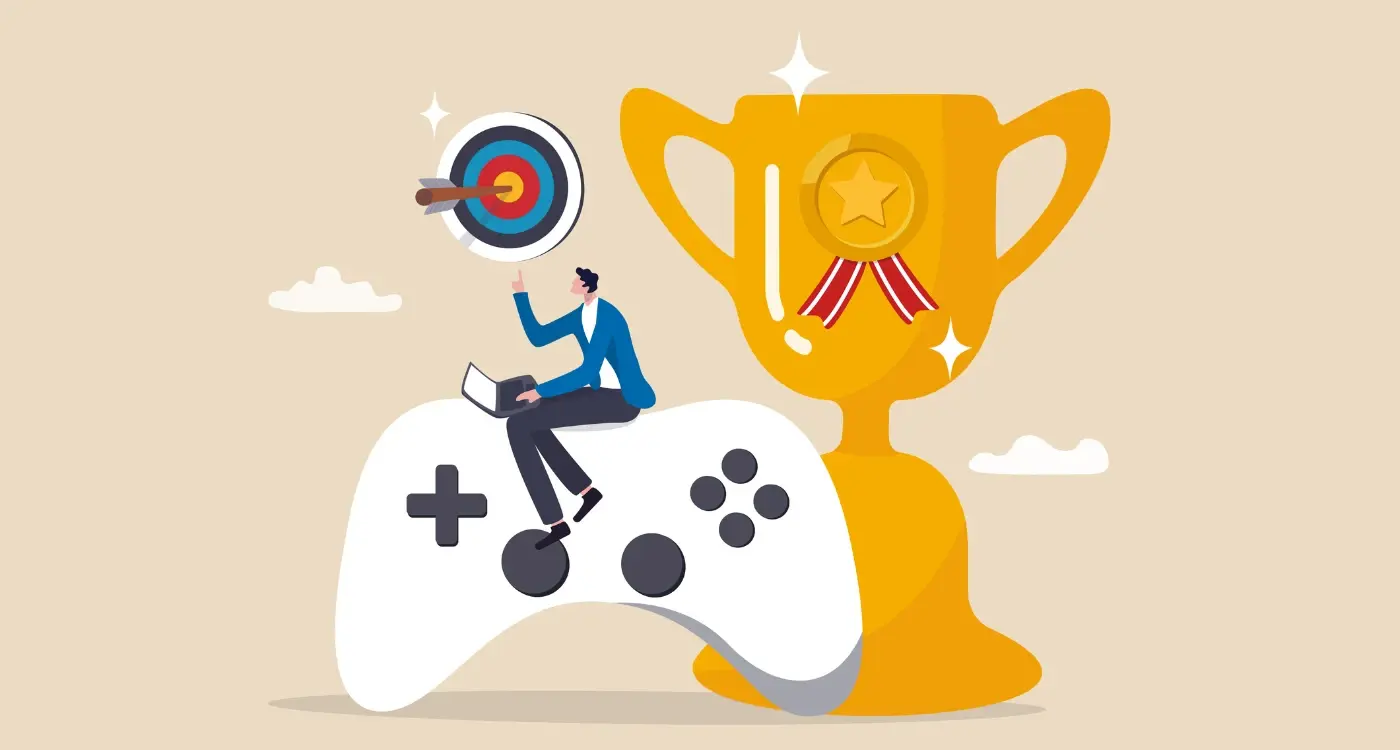What Simple Game Tricks Make Boring Tasks Feel More Fun?
A photography app launches with all the right features—filters, editing tools, cloud storage. Users download it, play around for a few minutes, then never open it again. Why? Because uploading photos, organising albums, and backing up images feels like work. Now imagine the same app where each uploaded photo earns you points, completing your weekly backup unlocks a special filter, and sharing photos with friends creates friendly competition. Suddenly, those boring tasks become something users actually want to do.
I've watched countless apps fail not because they lacked good features, but because they made users feel like they were doing chores. People have limited time and even less patience for apps that feel like obligation rather than entertainment. The solution isn't to remove necessary tasks—it's to make them feel rewarding.
Gamification isn't about adding meaningless badges or points to everything. It's about understanding what motivates people and designing experiences that tap into those natural desires. When done right, it transforms routine actions into engaging experiences that users genuinely enjoy.
The best gamified experiences don't feel like games at all—they just make the thing you need to do feel worth doing
But here's the thing—most apps get gamification completely wrong. They slap on some points and call it a day, wondering why users still aren't engaged. Real gamification requires understanding the psychology behind motivation, knowing when to reward users, and creating systems that feel meaningful rather than manipulative. It's about making boring necessary tasks feel like choices people want to make, not obligations they have to endure.
Why Users Abandon Apps After One Use
Right, let's talk about the elephant in the room—why do users download your app, open it once, and then never touch it again? After building apps for nearly a decade, I can tell you its usually not what you think.
Most people assume it's because their app is buggy or looks terrible. Sure, those things don't help, but the real killer is something much more basic: users don't understand the value within the first 30 seconds. I mean, literally 30 seconds. That's how long you have to convince someone that your app deserves space on their phone.
The biggest mistake I see is apps that immediately ask for permissions, require account creation, or throw users into lengthy tutorials before showing any actual value. Would you sign up for a gym membership before seeing the facilities? Of course not. But here's the thing—most apps do exactly that.
The Top Reasons Users Bounce
- Confusing onboarding that takes too long
- No clear value proposition shown upfront
- Too many permission requests before demonstrating usefulness
- Complex navigation that requires learning
- No immediate gratification or quick wins
- Apps that feel too much like work without rewards
What's really interesting is that boring task apps—like habit trackers or productivity tools—have it even harder. Users download them with good intentions, but when they open the app and see another todo list or form to fill out, they immediately feel overwhelmed. There's no excitement, no immediate payoff.
But here's where game design principles can completely change the equation. Games never start with a boring tutorial about controls; they drop you straight into something fun and rewarding. They give you an easy win within seconds, not minutes. And that's exactly what we need to borrow from gaming to keep users engaged past that first crucial session.
The Psychology Behind Game Rewards
Right, let's get into the meat of why game rewards work so bloody well. After building dozens of apps with reward systems, I can tell you its not just about slapping badges onto tasks and hoping for the best—there's proper psychology at play here.
The secret sauce is something called variable ratio reinforcement. Basically, our brains are hardwired to get excited when we don't know exactly when the next reward is coming. Think about it: slot machines use this exact principle, and they're ridiculously addictive. When users complete tasks in your app, mixing predictable rewards with surprise bonuses keeps their dopamine levels dancing.
But here's the thing—timing matters more than you'd think. I've seen apps that shower users with rewards every single action, and honestly? It backfires. Users get reward fatigue faster than you can say "achievement unlocked." The sweet spot is rewarding effort, not just completion. When someone struggles through a difficult task and finally nails it, that's when you want to celebrate them properly.
Make your first reward come quickly (within the first 2-3 actions) but then stretch the intervals. This hooks users early while building anticipation for bigger rewards later.
The Three Types of Motivation
There are three psychological drivers you need to understand when designing rewards:
- Autonomy - Users want to feel they're choosing to engage, not being forced
- Mastery - People love getting better at things, even mundane tasks
- Purpose - Rewards work best when they connect to something meaningful
I've noticed that apps focusing on just one of these elements tend to plateau quickly. The magic happens when you combine all three—giving users choice in how they earn rewards, letting them build skills over time, and connecting everything to a larger goal they actually care about.
Points and Badges That Actually Work
Right, let's talk about points and badges—because honestly, most apps get this completely wrong. I've seen so many projects where clients think they can just slap some stars and numbers on their app and suddenly users will be hooked. It doesn't work like that.
The secret isn't about giving out points for everything. Actually, that's the fastest way to make your rewards feel meaningless. I learned this the hard way working on a fitness app where we initially gave points for opening the app, looking at your stats, even just scrolling through the feed. Users stopped caring within days because the points felt cheap.
What works? Points that connect to real accomplishments. When someone completes their first workout streak, finishes a challenging level, or helps another user—that's when points matter. The key is making sure each point represents genuine effort or achievement.
Badge Systems That People Actually Want
Badges are trickier than points because they need to tell a story. The most effective badges I've implemented celebrate specific moments: "Early Bird" for morning users, "Helper" for community contributions, or "Streak Master" for consistency. These work because they reflect something meaningful about the user's behaviour.
But here's something most developers miss—badges need to be rare enough to feel special but achievable enough that users believe they can earn them. I usually aim for about 20-30% of active users earning any given badge. Too common and they lose value; too rare and people give up trying.
The timing matters too. Award points immediately when someone completes an action, but save badge notifications for when users return to your app. This creates a nice surprise that encourages continued engagement without interrupting their current task.
Progress Bars and Achievement Systems
Progress bars are probably the simplest trick in the book—and honestly, they work because our brains are wired to want completion. I've seen users spend ages filling up a profile just because there's a little bar showing they're 60% done. It's a bit mad really, but that visual feedback makes all the difference between someone giving up halfway through onboarding or pushing through to the end.
The thing is, not all progress bars are created equal. A boring linear bar that goes from 0 to 100% doesn't create much excitement. But break that same journey into smaller chunks? Now you're talking. I always tell clients to think about their user journey like climbing a staircase—each step should feel achievable and give a small sense of accomplishment.
Making Progress Feel Personal
Achievement systems work best when they feel personal and meaningful to the user. Generic badges like "First Login" or "Profile Complete" are fine, but they won't keep people engaged long-term. The apps I've built that really stick with users have achievements tied to their actual goals and interests; fitness apps that celebrate consistency over perfection, learning apps that acknowledge different learning styles, productivity apps that adapt to how people actually work.
The best progress indicators don't just show where you are—they make you excited about where you're going next
Here's what I've learned works: show progress in multiple ways simultaneously. Maybe there's an overall completion percentage, but also streaks, milestones, and small wins along the way. And please, for the love of all that's good, make sure your progress bars actually move smoothly—nothing kills motivation like a bar that jumps from 20% to 80% with no acknowledgment of the work in between.
Nothing gets people moving quite like a bit of friendly competition, does it? I've built apps where adding a simple leaderboard doubled user engagement overnight—and honestly, it still surprises me how powerful this can be.
The trick with social competition isn't just slapping a scoreboard onto your app and hoping for the best. You need to think about different types of users and what motivates them. Some people love being at the top of global rankings; others get more satisfaction from beating their mate from work or improving their personal best.
Creating Fair Competition
Here's where most apps get it wrong—they create systems where only the most dedicated users can win. That's demotivating for everyone else. Smart leaderboards use segmentation: beginners compete with beginners, you can have weekly resets, or location-based rankings.
I've seen fitness apps that compare you only to people who started their journey around the same time as you. Suddenly, instead of competing against someone who's been running marathons for years, you're racing against people at your level. Much more motivating, right?
Beyond Just Rankings
The best social features I've built go beyond simple scoreboards. Think team challenges where groups of friends work together towards a common goal, or seasonal tournaments that create time-limited excitement. You can also have multiple leaderboards—maybe one for consistency, another for total points, and a third for improvement rate.
But here's something crucial: always give users control over their privacy. Not everyone wants their activity broadcast to the world, and respecting that choice keeps more people engaged with your gamified features.
Making Daily Tasks Feel Like Quests
Here's the thing about turning boring tasks into quests—it's not about slapping on a medieval theme and calling it a day. Actually, it runs much deeper than that; successful quest design taps into our basic human need for purpose and progression. When I work with clients on their apps, I often see them trying to gamify tasks by adding points to everything, but that's missing the point entirely.
Real quests have stories. They have clear objectives and meaningful rewards. So when you're designing task flows in your app, think about the narrative—why is this user doing this boring thing? What's the bigger picture? A fitness app doesn't just ask you to "log your workout," it frames it as "building your strength streak" or "unlocking your next fitness milestone."
Break large tasks into smaller "side quests" that each have their own mini-rewards. Users feel accomplished more frequently and are less likely to abandon the main objective.
The key is creating what we call progressive disclosure. Don't overwhelm users with everything at once; reveal new challenges as they complete earlier ones. I've seen apps fail because they showed users 50 different tasks on day one—bloody overwhelming! Instead, introduce complexity gradually, like a proper quest chain.
Essential Quest Elements for Apps
- Clear starting point and end goal
- Checkpoints that show progress
- Meaningful rewards tied to the task's purpose
- Optional bonus objectives for engaged users
- Context about why this task matters
Remember, not every task needs to be a grand adventure. Sometimes a simple "daily challenge" format works better than an elaborate quest system. The goal is making users feel like they're working towards something worthwhile, not just ticking boxes for the sake of it.
Measuring Success in Gamified Apps
Right, so you've built this brilliant gamified app with points, badges, leaderboards—the works. But here's the thing: how do you actually know if its working? I mean, really working, not just looking pretty on screen.
After years of building these types of apps, I've learned that measuring gamification success isn't just about tracking downloads or daily active users. Sure, those numbers matter, but they don't tell you if people are genuinely engaged with your game mechanics or just tolerating them. If you're looking to track which notifications are driving engagement, you'll need to dig deeper than basic metrics.
The Metrics That Actually Matter
When I'm looking at how well gamification is performing, I focus on these key areas:
- Task completion rates—are people actually finishing what they started?
- Return frequency—do users come back consistently or just sporadically?
- Feature engagement—which game elements are people using most?
- Progression depth—how far do users advance through your system?
- Social interaction levels—are people competing or collaborating?
One client's fitness app showed something interesting: their step counter had high daily usage, but the weekly challenges were ignored completely. Turns out the rewards were too difficult to achieve—people gave up before even trying. We adjusted the difficulty curve and saw a 40% increase in challenge participation within two weeks.
Beyond the Numbers
Here's what I've noticed: the best indicator of successful gamification isn't how many points people earn or badges they collect. Its whether users start describing your app's tasks using game language. When someone says "I'm trying to beat my personal record" instead of "I need to complete this boring task," you know you've cracked it.
User reviews often reveal more about gamification success than analytics dashboards. People will explicitly mention feeling motivated, competitive, or accomplished—that's pure gold for understanding whether your game mechanics are actually making boring tasks feel fun. Understanding which persona metrics actually drive results can help you tailor your gamification approach to different user types.
After building apps for nearly a decade, I can tell you that gamification isn't just some trendy buzzword—it's one of the most powerful tools we have for keeping users engaged. The difference between apps that get deleted after a week and those that become part of someone's daily routine often comes down to how well they make ordinary tasks feel rewarding.
The thing is, most people think gamification means slapping some badges on their app and calling it a day. But that's not how it works at all. The apps that really succeed understand that good gamification is invisible; users don't even realise they're being motivated by game mechanics because it feels so natural.
I've seen fitness apps transform couch potatoes into marathon runners, productivity apps help people build life-changing habits, and even banking apps make saving money feel like a proper achievement. The secret? They all tap into something fundamental about human psychology—we're wired to seek progress, compete with others, and feel accomplished when we complete tasks.
But here's what I wish more app developers understood: gamification only works when it serves the user's actual goals, not just your engagement metrics. If you're using points and rewards to trick people into mindless tapping, you're doing it wrong. The best gamified experiences help users achieve something they genuinely want to accomplish.
So whether you're building the next big fitness app or trying to make tax filing less painful, remember that good gamification is about respect. Respect for your users' time, their intelligence, and their real-world objectives. Do that right, and you'll build something people genuinely love using—not just something they feel compelled to open.
Share this
Subscribe To Our Learning Centre
You May Also Like
These Related Guides

What Psychological Triggers Make Users Return To Apps?

What Features Should My Workout App Have To Keep Users Motivated?



